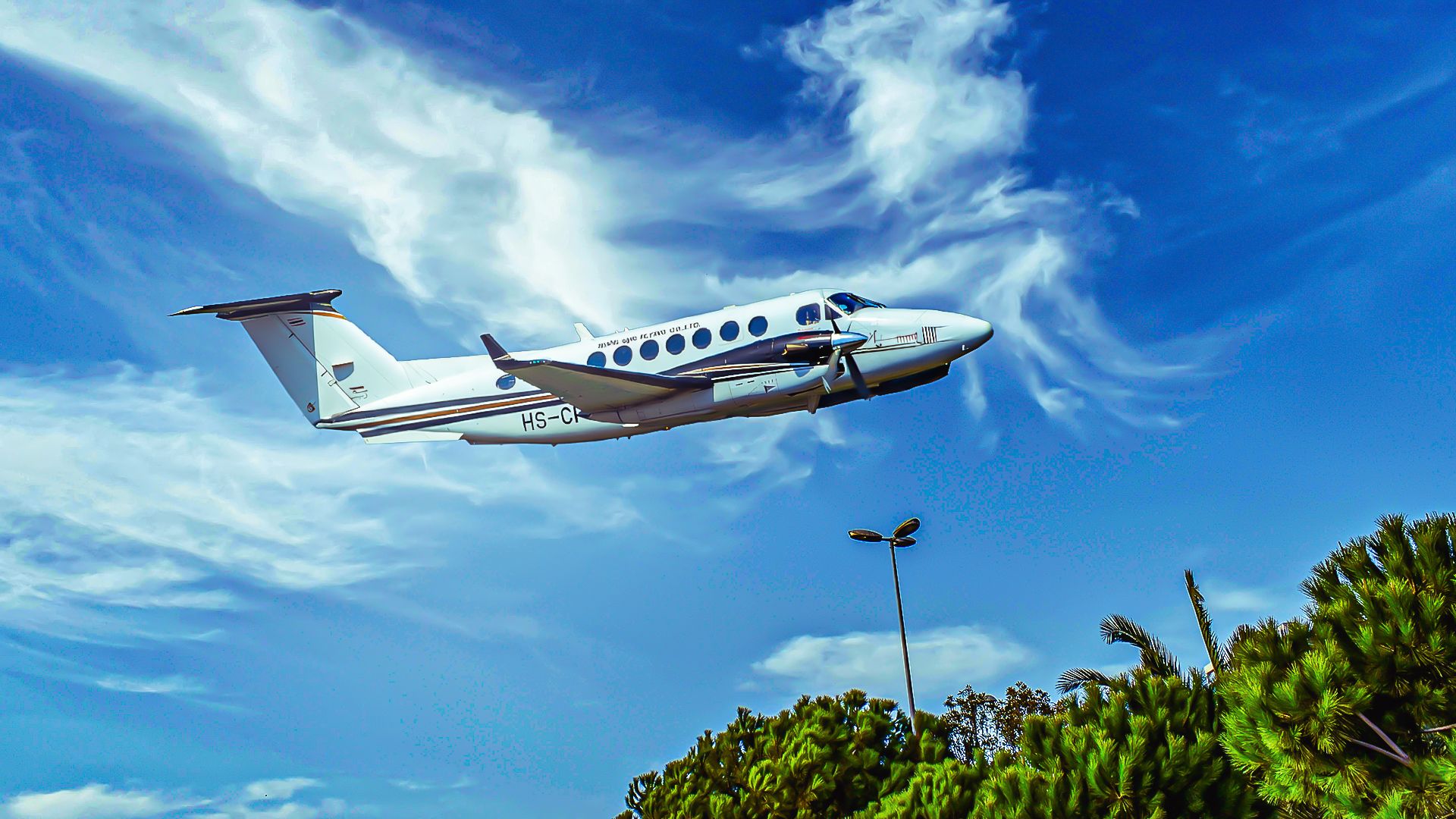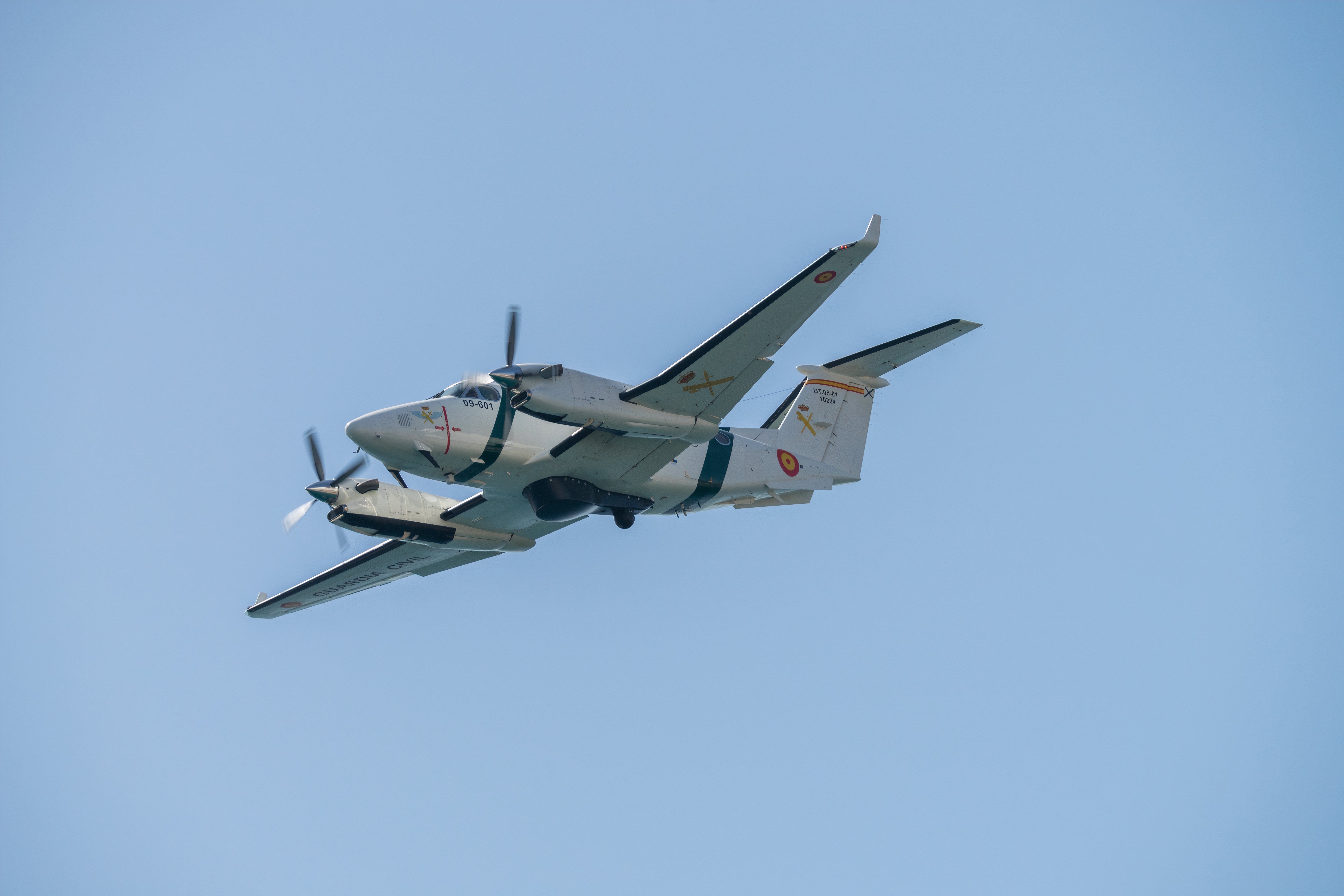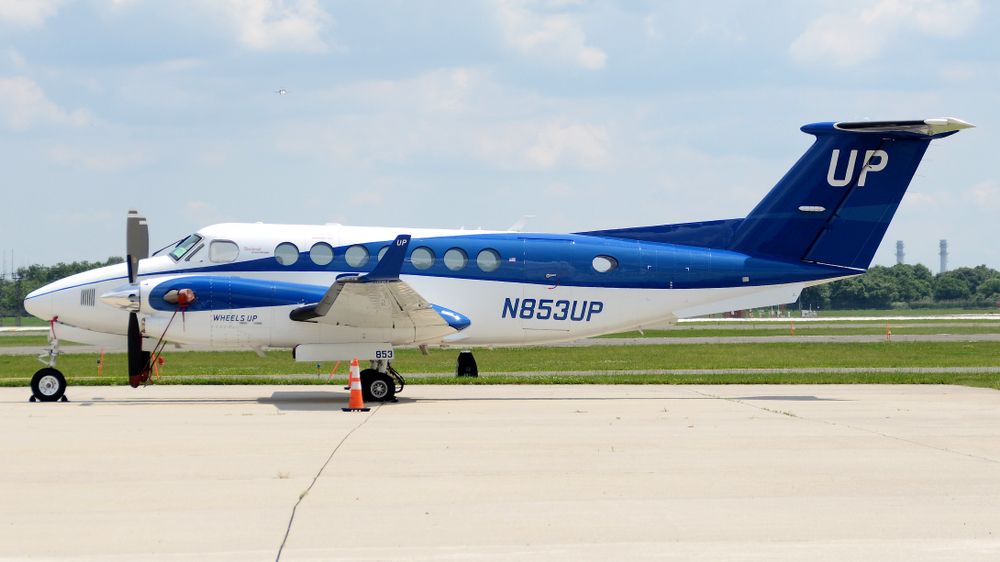Summary
- The Super King Air aircraft offers impressive range capabilities of up to 2,500 nautical miles.
- The King Air 360 and 360ER boast advanced features like an upgraded cockpit and enhanced passenger comfort.
- The Super King Air 300 series includes models with improvements in range, performance, and military applications.
When considering the purchase of a short-haul light turboprop aircraft, several important factors include performance, payload capabilities, and passenger capacities. None, however, could be more important than range, as the ability to fly further in a lighter, more affordable, and easy-to-fly airplane cannot be understated.
As a result, private manufacturers such as Beechcraft, have identified the importance of having advanced range capabilities for their light turboprop commercial lineup. Over the years, the company has continued to improve its Beechcraft Super King Air design to offer multiple variants that deliver a full slate of commercial capabilities for customers.
Photo: Carlos Calvo Torregrosa | Shutterstock
The Super King Air family is one of the best-selling twin-turboprop aircraft on the market today. The Model 200 and the Model 300 series originally entered the market with the “Super” in front of the aircraft family name. The company has produced multiple variants over the years, including those of the Model 90 and Model 100 series, but the latest variants of the family are the King Air 360 and King Air 360ER.
These two aircraft boast unique dynamics and come as the pinnacle of multiple decades of aircraft engineering. The planes feature next-generation features, and, most of all, can deliver an impressive range for a light, efficient, and affordable-to-operate private aircraft
of this size.
An aircraft consistently developed for over half of a century
The Super King Air story began in 1969 when the Model 200 series was born. The two previous generations of the King Air family, the Model 90 and the Model 100, had not received the “Super” moniker, denoting this as a completely new family.
The Model 200 offered several unique upgrades, including a T-shaped tail, stronger engines from manufacturer Pratt & Whitney Canada, a more extensive wingspan, and more. The aircraft also incorporated larger fuel tanks, allowing it to extend its range quite significantly. The first Model 200 prototype took to the skies for the first time in 1972 and received certification from civil aerospace regulators in 1973.
Photo: Catharine Pierce | Shutterstock
The twin-engine aircraft was used for several different purposes, including aerial surveying, private transportation, cargo delivery, and military applications. By the time the 1980s rolled around, the carrier sought to introduce the new B200, a variant with even more advanced engines and a new cabin pressurization system. Shortly afterward, the carrier introduced a cargo variant with similar upgrades.
By 2007, the carrier had introduced the B200GT and the B200CGT, passenger- and cargo-configured variants with even newer engines and more advanced avionics. The next variant, the 250EP, hit the market in 2014 and increased the aircraft’s capabilities by ensuring a higher Maximum Take-Off Weight (MTOW), according to Flying.
The King Air 260, which entered the market in 2020, offered even newer flight deck features. The longest-range versions of this aircraft could fly around 1,700 nautical miles, making all the following routes viable:
- Denver International Airport (DEN) to Orlando International Airport (MCO)
- Tuscon International Airport (TUS) to Miami International Airport (MIA)
- Hilton Head Airport (HHH) to Chicago-O’Hare International Airport (ORD)
In the years following the COVID-19 Pandemic, the carrier faced competitive pressures from other manufacturers, encouraging them to innovate further.
Additionally, with the success of military variants of the Super King Air family, the manufacturer has been forced to consider longer-term replacements for the C-12 Huron and RC-12 Guardrail, which have been in military service since the early 2000s, according to the Royal Air Force.
As a result, the stage was set for the brand-new Model 300 series to enter the market.
A line of aircraft meant to fill every niche for the next twenty years
The King Air 300 series began with the Model 300 and the Model 350, both of which made significant improvements on their predecessors in terms of range and performance. These planes were equipped with next-generation features across the board, including new ultra-quiet technology, according to Elliott Aircraft.
Multiple purpose-built military variants also rolled off of the manufacturer’s assembly lines, including some that were built exclusively for the Swiss Air Force and the Royal Australian Air Force (RAAF). These aircraft have gone on to serve a variety of roles, including maritime patrol, as per an analysis from the Royal Bahamas Defense Force.
Photo: Beechcraft
The latest variants to enter service are the King Air 360 and the 360ER, which both offer an upgraded cockpit with next-generation avionics, including an advanced autothrottle system. The aircraft’s cabin has also been enhanced to ensure greater passenger comfort, by lowering the cabin pressurization altitude.
But most importantly, the King Air 360 offers an impressive range of around 1,800 nautical miles, according to manufacturer Beechcraft. The 360ER extends this range to a mind-boggling 2,500 nautical miles, offering an impressive jump in range capabilities. All of the following routes are viable nonstop with a 360ER:
- New York Teterboro Airport (TEB) to San Francisco International Airport (SFO)
- Boston Logan International Airport (BOS) to Jackson Hole International Airport (JAC)
- East Hampton Airport (HTO) to Denver International Airport (DEN)
The 360ER, due to its extended range, has become popular with multirole operators that rely on the aircraft’s endurance, and it has taken to the skies with militaries, airlines, and private owners across the globe. Both variants have been fully certified by the Federal Aviation Administration (FAA) and European Aviation Safety Agency (EASA) ensuring that they are here to stay and will continue to pave the way for future generations of Super King Air development.




